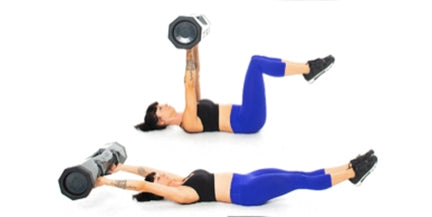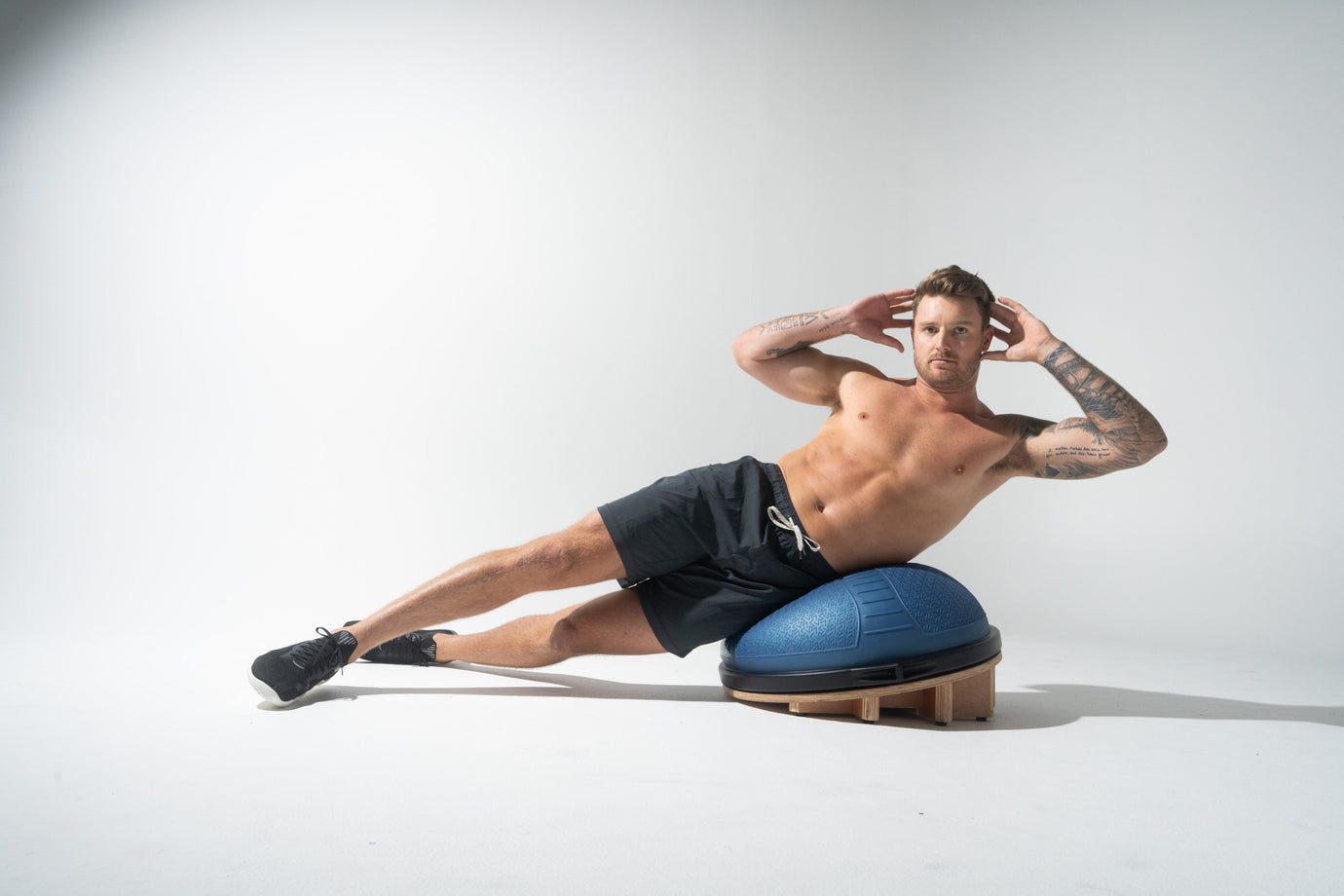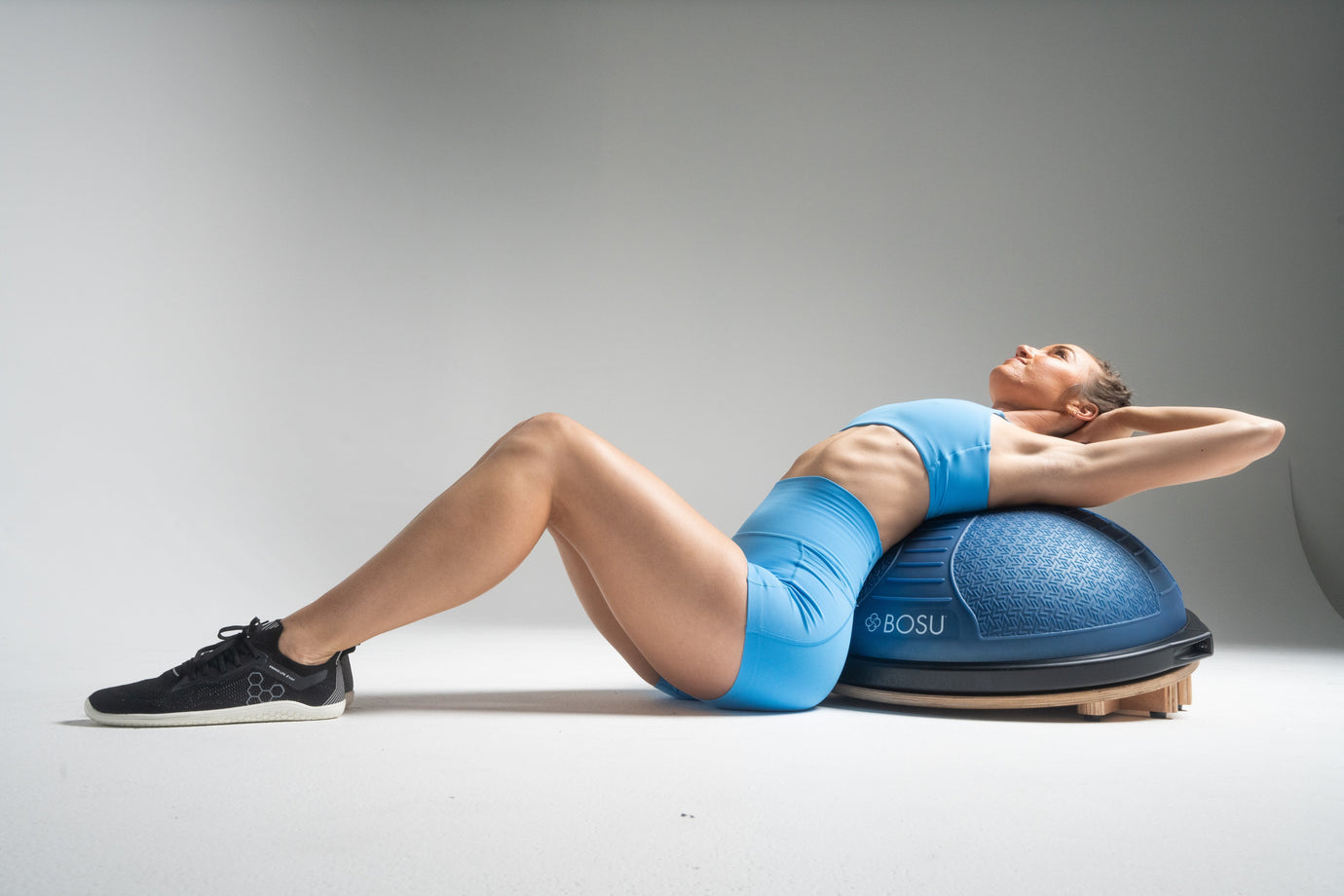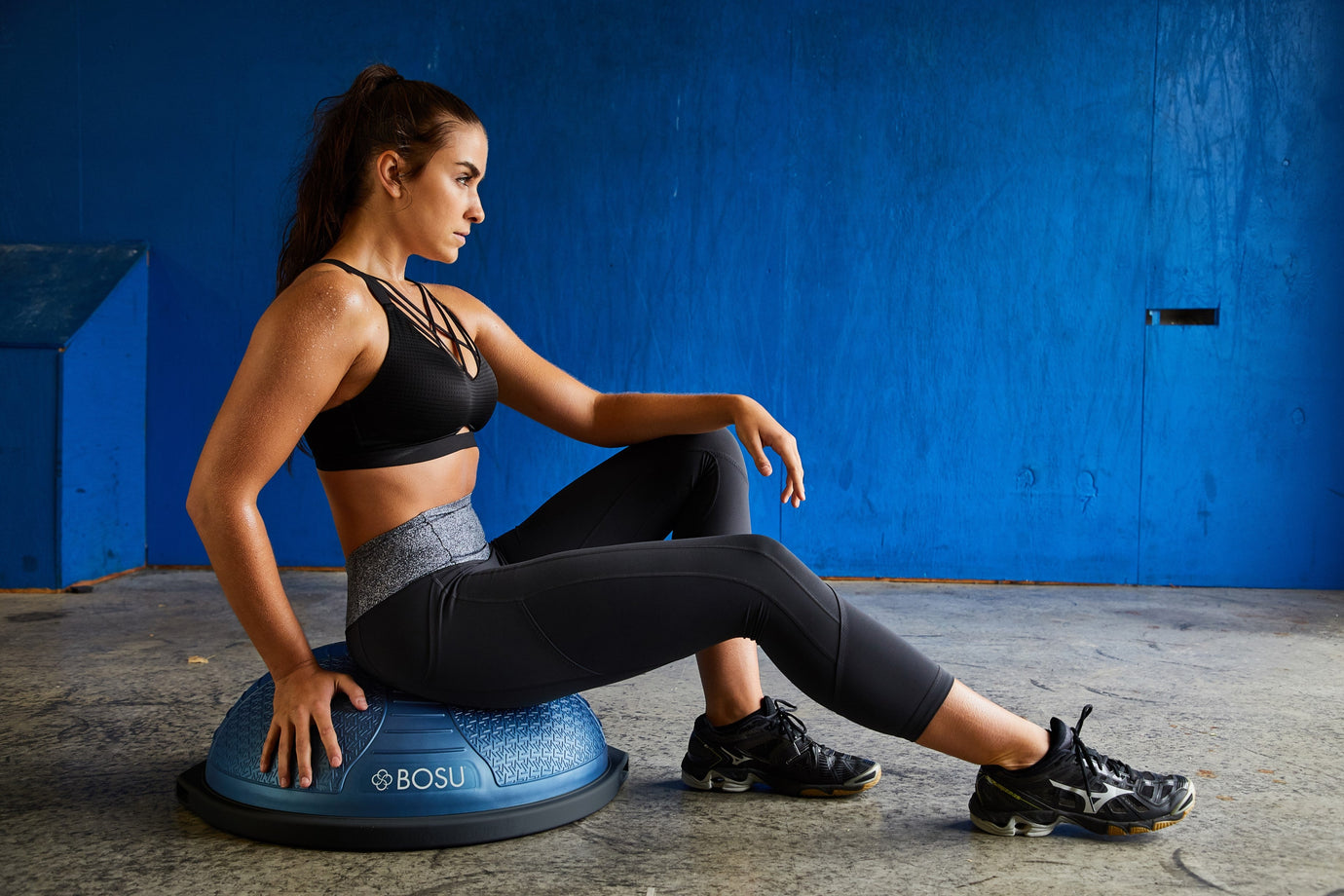Stabilization Training: The Why, What and How

You have to set the foundation before you build the house. If you don’t, we all know what happens and it typically isn’t pretty.
The same goes with the order of your training -- with stabilization training needing to happen prior to strength to help increase force generation and decrease stress on joints, tendons and ligaments. Use stabilization training as the foundation to build the rest of your training journey, and you can expect a much smoother ride long-term when it comes to remaining pain and injury free.
What is Stabilization Training: The Basics
Stabilization training uses higher repetitions of moves that have some form of ‘proprioceptively enriched’ criteria -- moves that in some way test your balance. It can be used early on in a strength-training program to help address postural problems in the form of imbalances, as well as aiding coordination, balance and muscular endurance prior to introducing higher resistance.
The general premise of stabilization training is to move from a stable to more unstable activity to test the ability of the structures and muscles involved to maintain a sense of equilibrium. This increases the neuromuscular recruitment required to stabilize the joints through your body and maintain optimal posture.
With its highly volatile resistance (in fact the most volatile element on the planet), the SURGE® Storm uses water to provide this proprioceptively rich environment. As the water moves within the SURGE® Storm, every movement requires micro-stabilizations. This instant auditory, visual and kinaesthetic feedback makes SURGE® Storm one of the most valuable tools on the market for this type of training.
In this blog, we’re specifically looking at how the SURGE® Storm can be used for stabilization exercises targeting the core, as well as the shoulder and hip complexes.
Benefits of Stability Training
Stability training improves balance, coordination, and core strength, enhancing overall movement efficiency. It activates deep stabilizing muscles, reducing injury risk and improving posture.
Stability exercises enhance athletic performance by increasing neuromuscular control and joint stability.
They also aid in rehabilitation by strengthening weak muscles and improving proprioception. Regular stability training supports functional fitness, making daily movements more efficient. It is essential for all fitness levels, from beginners to athletes, promoting longevity and injury prevention. Stability workouts engage multiple muscle groups, improving strength, endurance, and mobility for better overall health.
Best Stability Exercises
CORE
Core exercises in stabilization training involve little motion through the spine and pelvis. There are 29 muscles that attach to the core and it is made up of the entire axial skeleton (cervical, thoracic and lumbar spine), and the pelvis. Strip your arms and legs away from your body, and what’s left is the core. Some muscles are used for movements while the bulk are used for stabilization.
The core then becomes the ‘powerhouse’ and the link between movement of your arms and legs. It needs to be stable not only from a movement efficiency point of view, but also as the basis for strength and power.
Use these three SURGE® Storm exercises to practice core stabilization. As you perform each movement, concentrate on ‘bracing’ through the core – contracting the abdominal muscles as well as the muscles of the pelvic floor -- thinking ‘in and up’ as you breathe throughout each movement.
Start with Exercise 1 before progressing to Exercises 2 and 3. Begin with less water, adding more water only when capable.
1. Plank

- GRIP: Flat; place hands on top of SURGE® Storm
- BASE: Prone; plank position
- WATER ACTION: Quiet
EXECUTION: Maintain the shoulders directly above the wrists with a straight line from the shoulders to the ankles. Hold for 20 – 30 seconds per set.
2.Supine Pullover

- GRIP: Neutral; hold above shoulders with arms extended
- BASE: Supine “table-top” position
-
WATER ACTION: quiet
EXECUTION: Extend shoulders to lower SURGE® Storm overhead; simultaneously lower legs towards floor; return to start position. Perform 8 – 10 slow, controlled reps.
3. Uppercut

- GRIP: Neutral; hold in front of body with elbows slightly bent
- BASE: Standing; feet shoulder width stance
-
WATER ACTION: Oscillate
EXECUTION: Lower one end of the SURGE® Storm; rotate to drive Storm from low to high, pivoting back foot; return to start position. Perform 8 – 10 reps on each side.
SHOULDER GIRDLE
The scapula (or shoulder blade) sits on top of the rib cage and is held in place by the muscles of the shoulder girdle. In requiring both mobility and stability to stabilize the upper arm, poor movement patterns or imbalances in strength within the shoulder girdle can lead to instability or injury, particularly in the elbow, wrist and hand.
Much of your upper body strength relies heavily on stability of the shoulder girdle, which grounds the upper extremities and allows for greater strength as you move distally away from the midline of the body.
Most of us have some form of shoulder instability, which is why it’s important to set the foundation right and train for static (isometric) stabilization before introducing single-plane movements and eventually multi-planar movements.
Use these three SURGE® Storm exercises to practice shoulder girdle stabilization. As you perform each exercise, think to yourself ‘back and down’ for the shoulder girdle and scapula to maintain stabilization for the movement and integrity for the joint.
Start with Exercise 1 before progressing to Exercises 2 and 3. Begin with less water, adding more water only when capable.
1. Wide Grip Single Leg Deadlift

- GRIP: Wide; hold in front of hips with arms extended
-
BASE: Standing; shoulder width stance; weight on one leg (or both for bilateral deadlift)
- WATER ACTION: Quiet
EXECUTION: Hinge forward from hips, lifting one leg; pause; hinge back to start position.
Perform 8 – 10 reps, alternating sides.
2. Wide Grip Overhead Press

-
GRIP: Wide; hold in front of body at shoulder level
-
BASE: Standing; feet shoulder width stance
- WATER ACTION: Quiet
EXECUTION: Extend arms to press SURGE® Storm overhead; lower back to start position.
Perform 8 – 10 slow, controlled reps.
3. Horizontal Press

-
GRIP: Neutral; hold in front of body at chest level
-
BASE: Standing; feet shoulder width stance
- WATER ACTION: Quiet
EXECUTION: Extend arms to press SURGE® Storm front at chest level; return to start
Position. Perform 8 – 10 slow, controlled reps.
HIP COMPLEX
Any exercises for hip complex stability will involve the pelvis and muscles of the gluteus, hamstrings, piriformis, adductor complex, and deep core muscles including psoas.
These muscles can be notoriously weak and imbalanced, leading to faulty movement patterns and eventually lower back, knee and ankle problems.
A weak pelvis can cause the femur to internally rotate while moving, leading to knee pain, while a pelvis in anterior tilt causes the gluteals to surrender use to the hamstrings in any type of hip extension movement (e.g. bridges) which can lead to hamstring strain. Other injuries that can be caused by an unstable hip/pelvis complex include plantar fasciitis and IT band syndrome.
Modern day sitting has led to a shortening of many of the muscles that are utilized in hip stability. To combat the effects of this, many people will stretch the muscles within the hip complex out, which while a worthy endeavour, is only half the story. Strengthening these muscles to facilitate greater stability in the region, in conjunction with stretching, will provide a far greater remedy to lower back pain in particular.
Use these three SURGE® Storm exercises to practice hip complex stabilization. As you perform each movement, think about maintaining ‘level and square’ hips in a ‘neutral’ position (meaning neither forward or backward tilting).
Start with Exercise 1 before progressing to Exercises 2 and 3. Begin with less water, adding more water only when capable.
1. Rack Squat

-
GRIP: Rack; hold at shoulder height with elbows high
-
BASE: Standing; shoulder width stance
- WATER ACTION: Quiet
EXECUTION: Weight in heels; squat keeping chest and elbows high; extend to start position.
Perform 8 – 10 slow, controlled reps.
2. Shoulder Carry Reverse Lunge

-
GRIP: Shoulder; hold on one shoulder
-
BASE: Standing; feet hip width stance
- WATER ACTION: Quiet
EXECUTION: Step back; lower back knee to lunge; step forward to start position. Perform 8
– 10 repetitions, alternating sides.
3. Long-Handle Single Leg RDL

-
GRIP: Neutral; one hand holding long handle at side
-
BASE: Standing; feet together
- WATER ACTION: Quiet
EXECUTION: Hinge forward, lifting same side leg; hinge back to start position. Perform 8 –
10 repetitions, alternating sides.
Greg Sellar is a member of the SURGE® Master Trainer Team and Education Programming Faculty. He is an accredited ICF-Coach with certifications in Coaching, Leadership & Mentoring, as well as being an LSI (Lifestyles Inventory) accredited Practitioner. He splits his time between the fitness industry and delivering leadership workshops and keynote speeches to major corporate clients in the UK, USA and Australia. He has recently launched his brand new 90-day LIFEHACK program focusing on mindset and behavior change, available via his website GREGSELLAR.COM.




